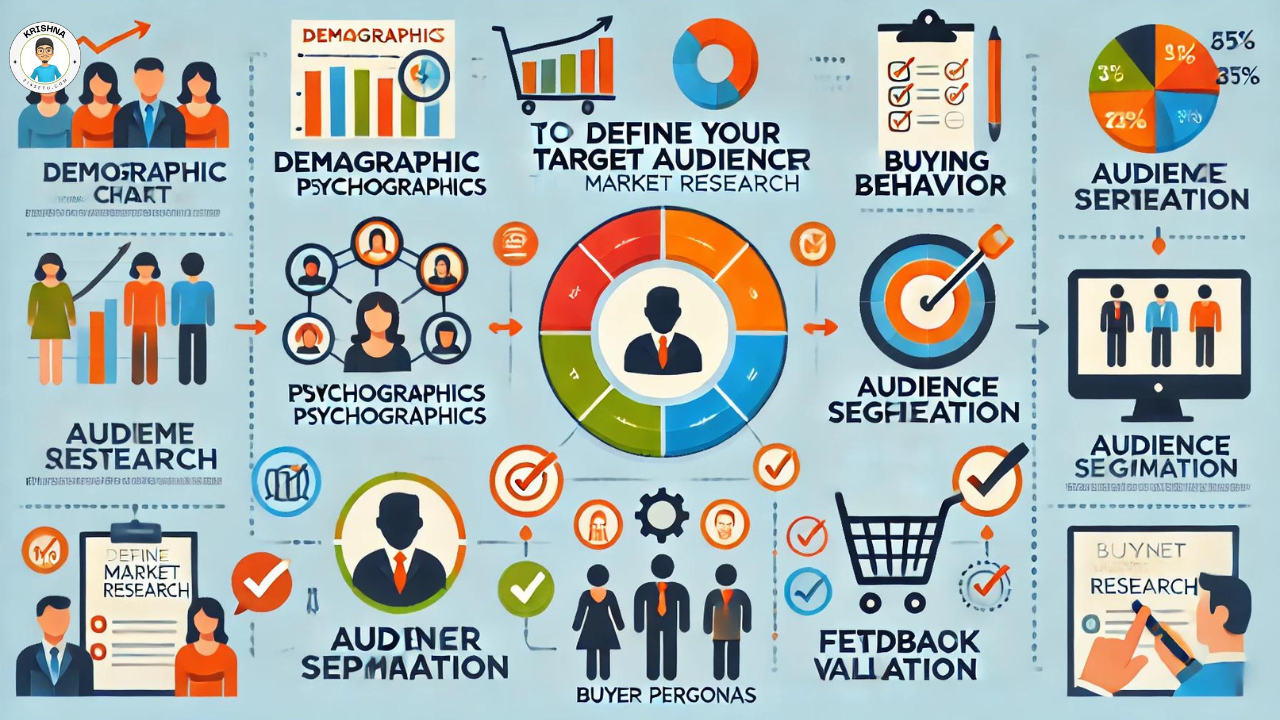
If you’re looking to build a successful business, understanding who your target audience is should be at the top of your priority list. Knowing your audience helps you tailor your marketing efforts, improve product offerings, and increase customer satisfaction. In this guide, we’ll walk you through the essential steps to master market research and define your target audience effectively.
Understanding the Mindset of Your Audience
Step 1: Start with Basic Demographics
Collect Demographic Information
Gather basic demographic information to get a broad understanding of who your potential customers are.
- Example: Age, gender, income, education level, marital status, and occupation.
Use Available Tools
Leverage tools like Google Analytics, social media insights, and census data to gather demographic information.
- Example: Facebook Audience Insights can provide detailed demographics of your followers.
Step 2: Understand Psychographics
Explore Interests and Values
Dive deeper into the interests, values, and lifestyles of your audience to understand what drives their behavior.
- Example: What hobbies do they have? What are their core values?
Conduct Surveys and Interviews
Directly ask your audience about their preferences, motivations, and challenges.
- Example: Use SurveyMonkey to create and distribute surveys, or conduct one-on-one interviews with a sample of your customers.
Step 3: Analyze Buying Behavior
Track Purchase Patterns
Look at how your customers are buying your products. Are they making one-time purchases, or are they recurring customers?
- Example: Use your ecommerce platform’s analytics to track purchase frequency, average order value, and customer retention rates.
Understand Decision-Making Processes
Identify the factors that influence your customers’ buying decisions, such as price sensitivity, brand loyalty, and peer recommendations.
- Example: Amazon’s recommendation engine shows related products based on previous purchases and browsing behavior.
Step 4: Segment Your Audience
Create Segments Based on Common Traits
Group your audience into segments based on shared characteristics and behaviors.
- Example: Segment your audience into groups like “bargain hunters,” “loyal customers,” and “impulse buyers.”
Tailor Marketing Efforts to Each Segment
Develop specific marketing strategies for each segment to address their unique needs and preferences.
- Example: Offer special discounts to bargain hunters, loyalty programs to repeat customers, and limited-time offers to impulse buyers.
Step 5: Develop Detailed Buyer Personas
Create Persona Profiles
Build detailed profiles of your ideal customers, including their demographics, psychographics, buying behavior, and pain points.
- Example: “Tech-Savvy Tom” is a 30-year-old IT professional who values innovation and efficiency in gadgets.
Use Personas to Guide Marketing Strategies
Use these personas to inform your marketing strategies, product development, and customer service approaches.
- Example: Tailor your content and messaging to resonate with each persona’s specific interests and needs.
Step 6: Validate Your Findings
Test and Iterate
Test your assumptions and strategies with real customers to see if they resonate.
- Example: Run A/B tests on different marketing messages to see which one performs better with your target audience.
Gather Feedback
Continuously gather feedback from your audience to refine your understanding and adjust your strategies accordingly.
- Example: Use customer feedback forms, reviews, and social media interactions to gather insights.
Conclusion: Putting It All Together
Defining your target audience is an ongoing process that involves collecting and analyzing data, segmenting your audience, and continuously refining your understanding. By following these steps, you’ll be well on your way to mastering market research and building strong, lasting relationships with your customers.

